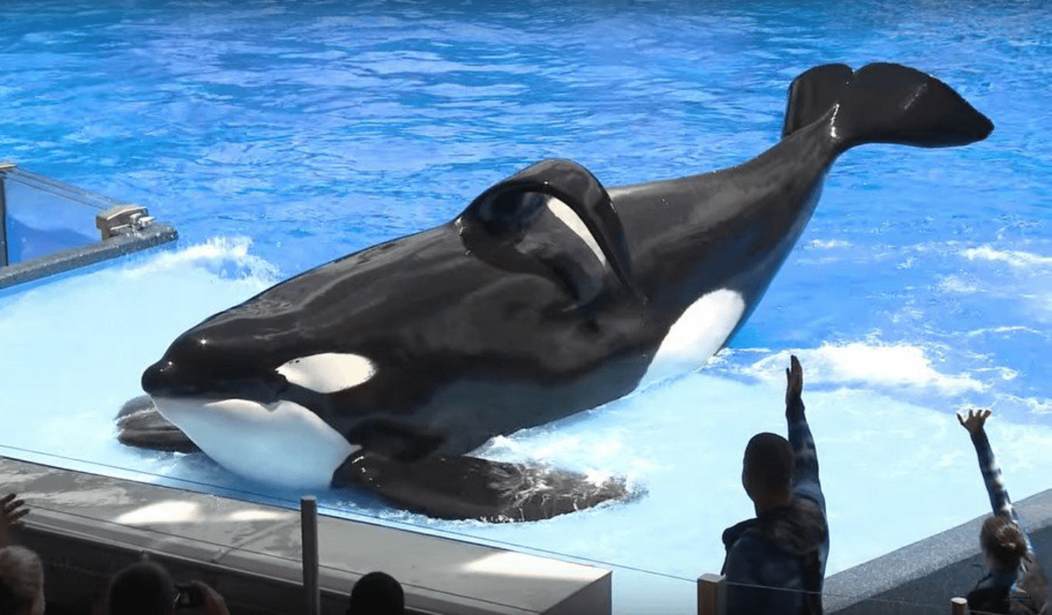A killer whale involved in the deaths of three people, and popularized by a 2013 documentary, passed away Friday, according to SeaWorld.
The orca Tilikum, whose story formed the centerpiece of the 2013 CNN documentary Blackfish, reportedly died early Friday morning. SeaWorld previously reported in March that the orca — then estimated to be 35 years old — might be dying.
“Tilikum passed away early this morning, January 6, surrounded by the trainers, care staff and veterinarians that provided him around-the-clock world-class care,” SeaWorld announced on its website. “Tilikum had, and will continue to have, a special place in the hearts of the SeaWorld family, as well as the millions of people all over the world that he inspired,” SeaWorld President and CEO Joel Manby said in a statement. “My heart goes out to our team who cared for him like family.”
We’re saddened to announce the passing of Tilikum, a beloved member of the SeaWorld family for 25 years. https://t.co/T7Y3fTgecp pic.twitter.com/vLfpi5szCc
— SeaWorld (@SeaWorld) January 6, 2017
SeaWorld had come under fire for its treatment of killer whales since the 2013 documentary, which gave a disturbing portrayal of the captivity of killer whales. The Orlando-based water park operator called the film false, misleading, and “emotionally manipulative.”
Heartbreaking news. SeaWorld has announced the passing of Tilikum #RIPTilikum #Blackfish pic.twitter.com/oR8qwzsOpd
— Blackfish (@blackfishmovie) January 6, 2017
Following the news of Tilikum’s death, People for the Ethical Treatment of Animals (PETA) tweeted, “R.I.P. Tilikum Dead after three decades of misery.”
BREAKING: After 33 years in captivity, Tilikum—who was the subject of #Blackfish—is dead. #RIPTilikum pic.twitter.com/Duj9KOEJbo
— PETA (@peta) January 6, 2017
SeaWorld insisted that the orca had received care of the highest standards. “While the official cause of death will not be determined until the necropsy is completed, the SeaWorld veterinarians were treating a persistent and complicated bacterial lung infection,” the company insisted in a statement. “The suspected bacteria is part of a group of bacteria that is found in water and soil both in wild habitats and zoological settings.” Treatment included “combinations of anti-inflammatories, anti-bacterials, anti-nausia medications, hydration therapy and aerosolized antimicrobial therapy.”
The statement also added that “Tilikum’s life will always be inextricably connected with the loss of our dear friend and colleague, Dawn Brancheau,” the trainer who died in 2010. The 40-year-old trainer died from “multiple traumatic injuries and drowning” after the 12,000-pound killer whale grabbed her ponytail and pulled her underwater at Shamu Stadium, the Orange County Sheriff’s Office reported at the time. Rescuers were unable to reach Brancheau due to the “whale’s aggressive nature.”
Tilikum was also linked to two other deaths. In 1991, he and two other whales were involved in the drowning of a trainer at a marine park in Victoria, British Columbia. The trainer fell into the whale tank and was dragged underwater as park visitors watched. In 1999, Tilikum was blamed for the death of a 27-year-old man whose body was found floating in a tank at SeaWorld. He reportedly fell victim to the whale’s “horseplay.”
Tilikum was captured off the coast of Iceland and sired 21 calves in captivity. SeaWorld now has 22 orcas at three facilities in Orlando, Florida; San Antonio, Texas; and San Diego, California.
SeaWorld’s most famous killer whale was not the only orca to pass away early this year, however. The world’s oldest known killer whale, known as “Granny,” reportedly died after going missing. She was estimated to have been 105 years old at the time of death. Born the same year the Titanic sank, she was last spotted on October 12 in the Haro Strait, but scientists have given up hope of ever seeing her again.
Check out the trailer for Blackfish below.









Join the conversation as a VIP Member